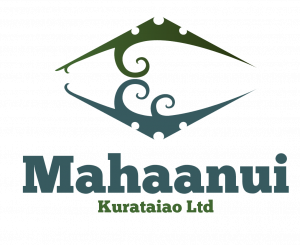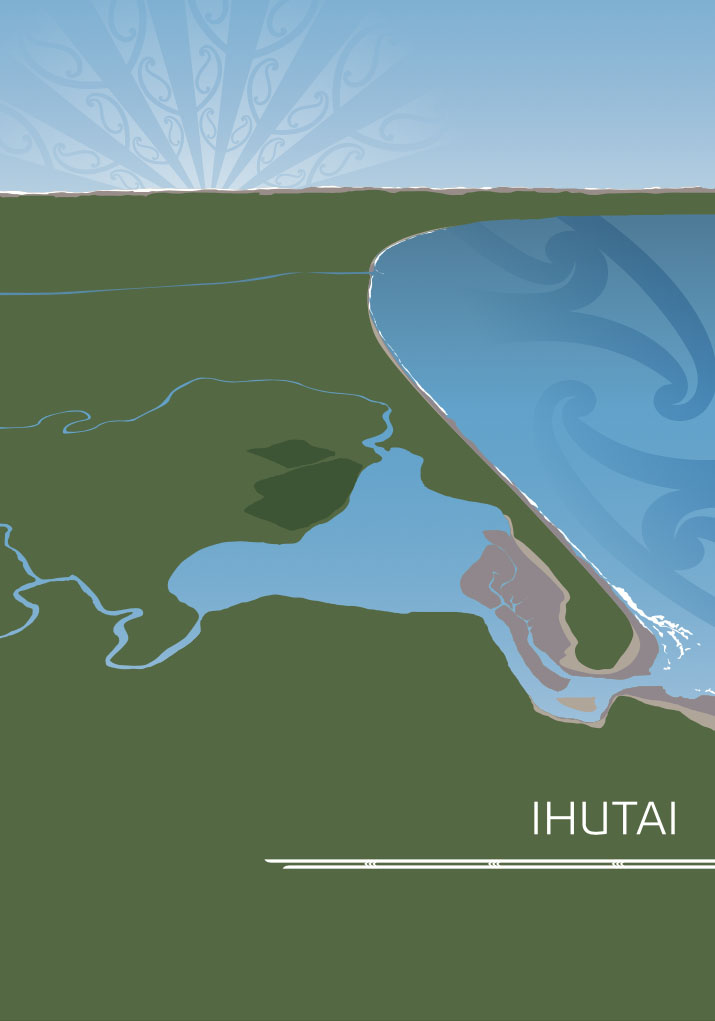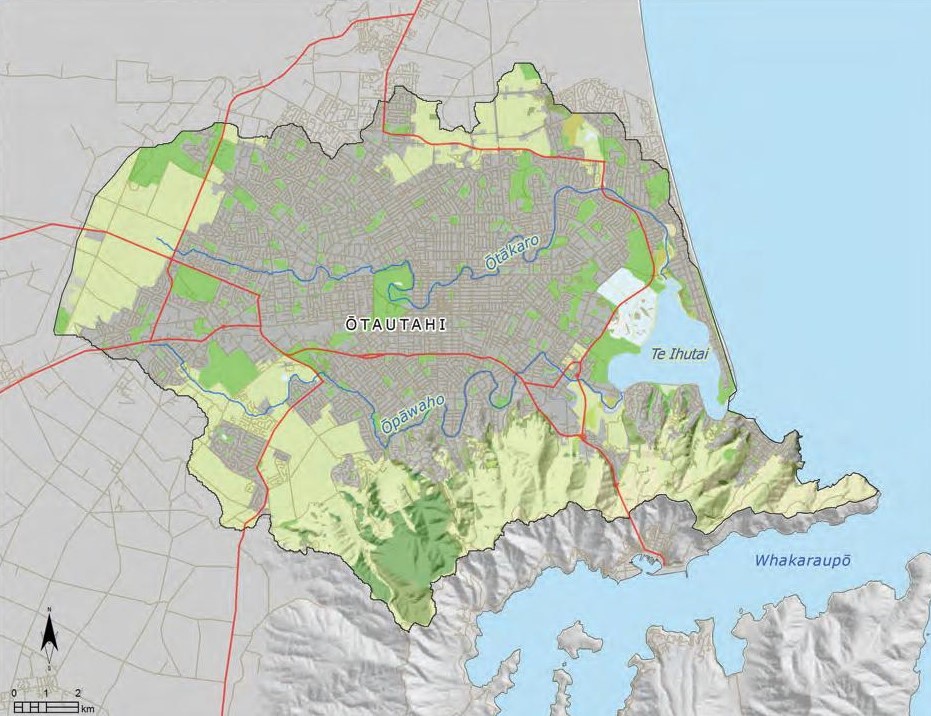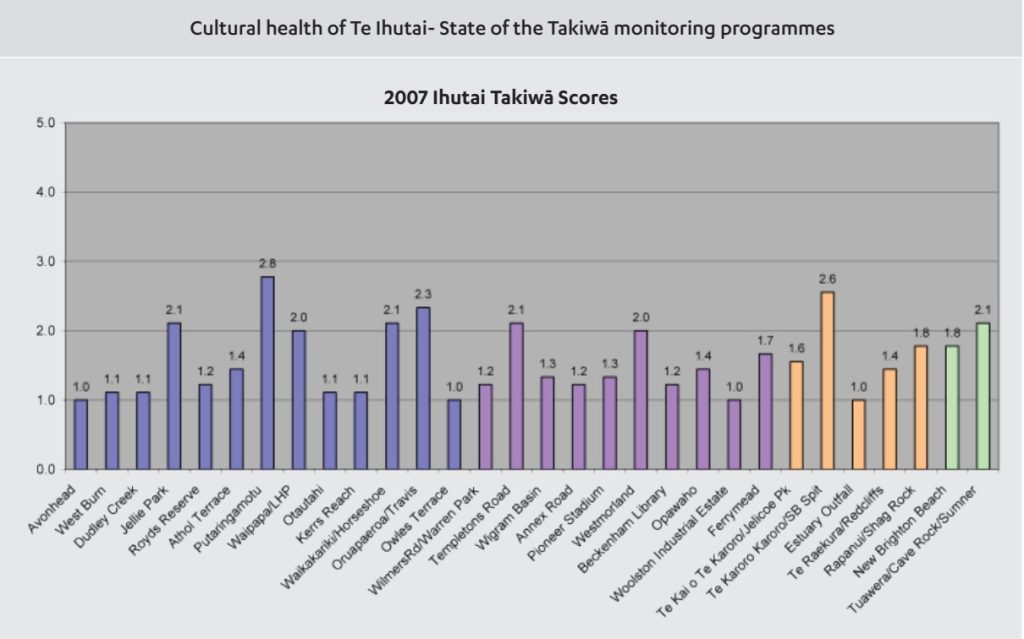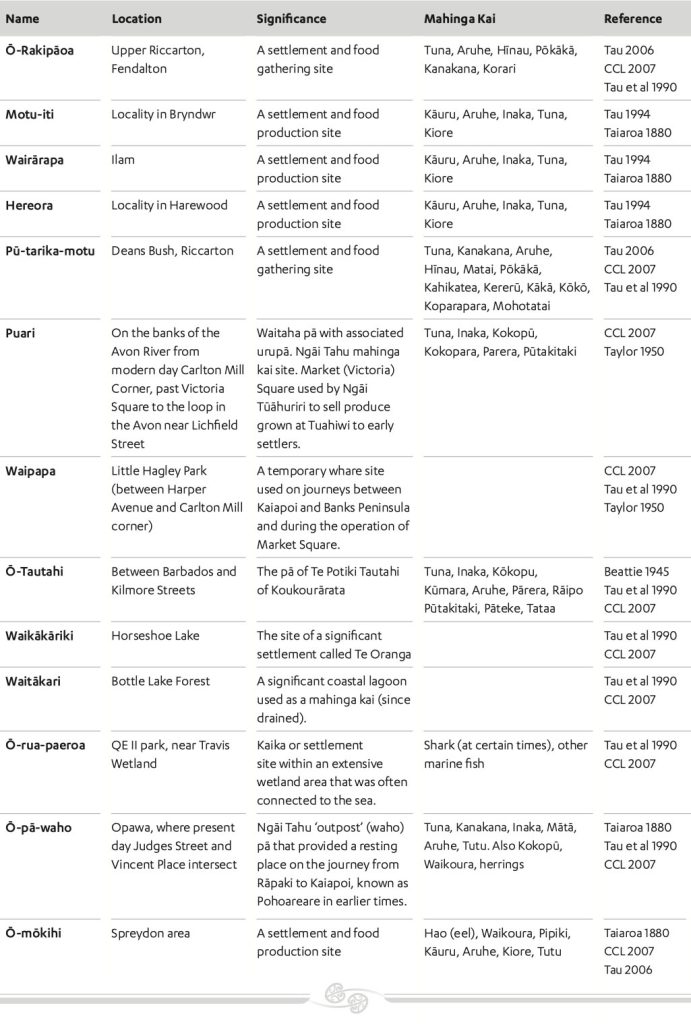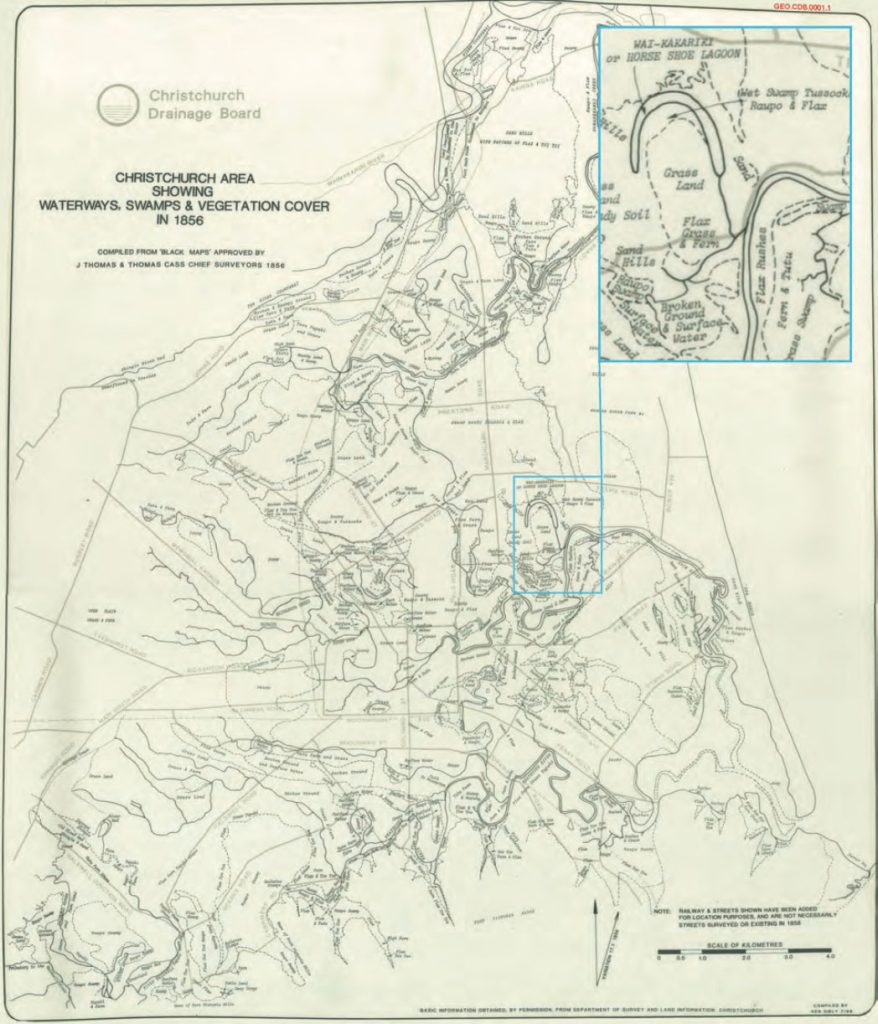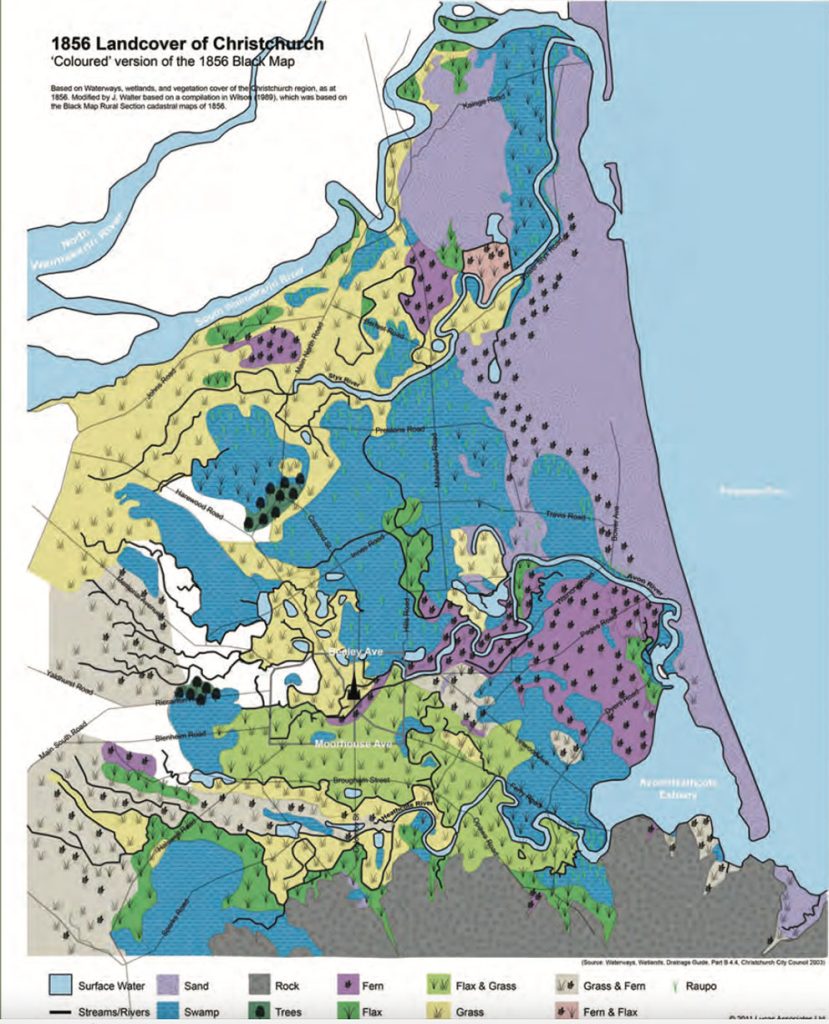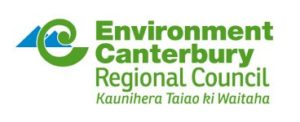This section addresses issues of particular significance associated with the Ihutai catchment. The catchment area includes the Ōtakaro and Ōpāwaho rivers, and Te Ihutai (the estuary), and generally follows the boundaries of the urban environment of Ōtautahi (Map 12).
The Ihutai catchment is an area of immense cultural and historical importance to tāngata whenua. The area was a place of significant settlement and food gathering for Waitaha, Ngāti Mamoe and Ngāi Tahu for over 600 years. While the estuary itself provided an abundance of valuable food resources, equally important was the estuary’s catchment, which was made up of an extensive network of springs, waterways, swamps, grasslands and lowland podocarp forests.
The effect of the city’s historical and ongoing urban development on Ngāi Tahu cultural values is a key kaupapa underlying issues and policies in this section. The catchment is a highly modified environment that has undergone dramatic change in the last 160 years, particularly with regard to the loss of mahinga kai, natural areas and indigenous habitats and ecosystems, and the decline of water quality. Ngāi Tahu cultural health assessments undertaken in 2007 and 2012 found the catchments are generally in a poor state of cultural health, based on cultural health assessment factors such as suitability of harvesting mahinga kai, water quality, physical and legal access, degree of external pressure on site, degree of modification, and the presence and abundance of native fish, bird and plants species, as well as introduced species (see Figure 1).
The rebuild and redevelopment of Ōtautahi provides a unique opportunity to re-establish a strong and visible indigenous presence on the city landscape (Issue IH1), enhancing a sense of identity and belonging for Ngāi Tahu in the city.
